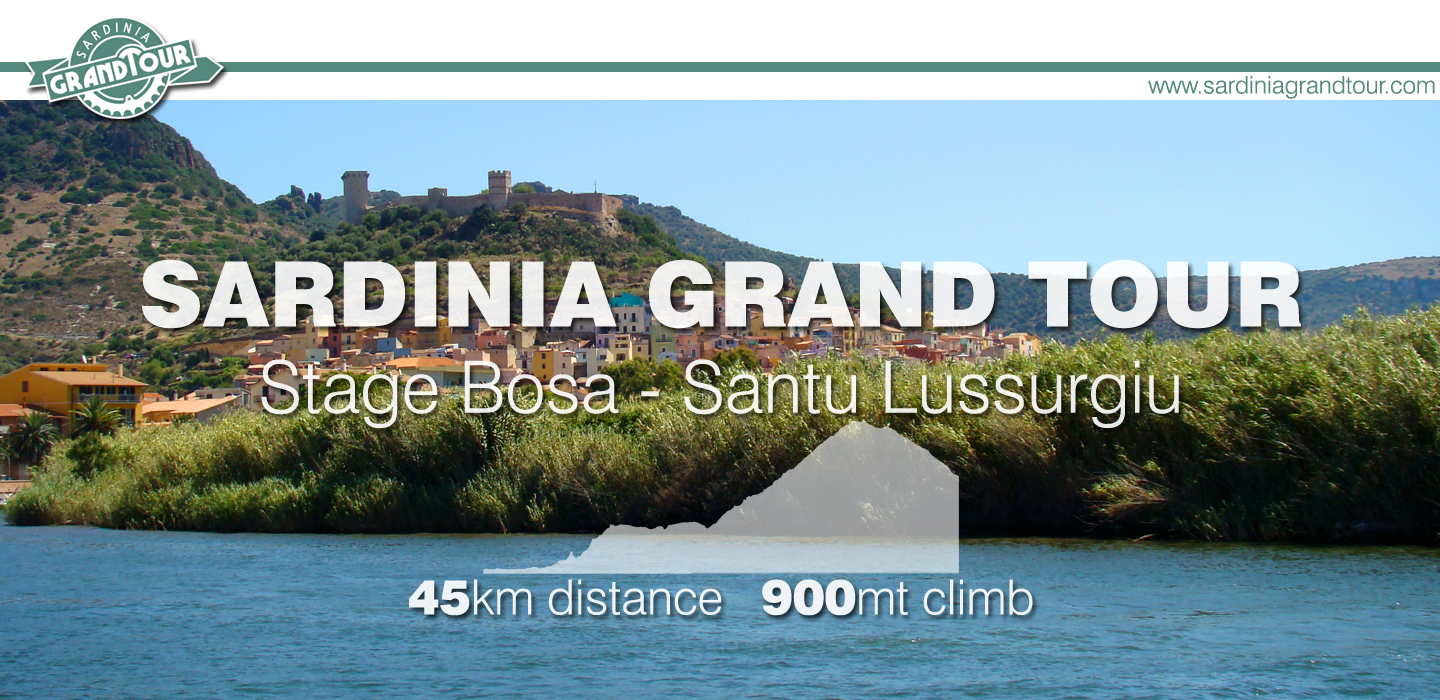Bosa and its happiness
Every time I leave Bosa, it’s a bit sad to leave as well its light hearted people.
As soon as you get outside the village, it’s worth to stop to admire at a glance the castle, the river, and the village itself, that looks nestled among the hills, with its houses painted with lively colors like the nature of its people.
As the story goes, the fisherman were used to paint their houses with bright colors to recognize it from the sea…actually it looks they were just using the leftovers of the paint for the boats.
A neat countryside
At the mouth of Temo river we’ll pedal along the coastline, then we’ll start a relaxing climb among a paint of vegetable gardens, orchards and small Malvasia vineyards.
This grape, thanks to the Mistral wind blowing from the sea straight to the hills, grows without requiring chemicals, giving a very distinctive and selected wine.
We climb almost hypnotized from this countryside, almost without perceiving the climb, above all during the morning and just before the sunset, when the sun creates a shifting scenic design. The first village to cross is Modolo, so charming at top of the hill, at the end of the climb we’ll pass through Magomadas and Tresnuraghes, all places were locals still live from farming and agriculture. We suggest a stop along the road in one of the bars, to meet the locals and have a look everyday life of those people. From Tresnuraghes we downhill along a canyon, crossing the small village (very small!) of Sennariolo decorated with murals, till the footsteps of Montiferru, the Sardinian ancient dormant volcano, Sardinia is in fact the oldest land of Europe, so not eruption or earthquakes prone.
Cuglieri and the Montiferru, Volcano of good food
Cuglieri profile stands out on the edge of the hill, dominated by the magnificent Cathedral of Santa Maria della Neve, a place that deserves a visit to be paid with an extra climb through the narrow cobblestone streets of the village, to enjoy a gorgeous view over the west coast.
Like many other places on the island, this is an area still untouched by mass tourism, a nice place to live, as few foreigners notice it and moved in, mostly from northern Europe.
If you decide to have lunch here, don’t miss Desogos restaurant, where Pina and Family will warmly welcome you offering a tasty home cooking.
During weekends it can happen to meet families of locals celebrating baptisms, communions or birthdays…and may be they will offer you some almonds cookies.
The whole area is famous for the olive oil, and during the last decades quality has improved a lot. being awarded internationally. At Peddio mill, you can know the history of olive colture of the area, and during November and December seeing the whole production process.
Another unique food of the area is the reed beef, a free range breed with a very tasty meat, a slow food protected food, like its “Casizolu” cheese.
Santu Lussurgiu, new life in the ancient village
Sardinia is a place where, after each climb, there’s another one:)
So just don’t worry about it and start the last beautiful climb till Santu Lussurgiu.
Imagine a super smooth asphalt, a twisting road that climbs at an average gradient of 5%, under a thick forest of oak threes, a fresh shade even on the warmest summer days. Fantastic…and the best has to come!
After the Madonnina pass we fly along a natural terrace overlooking the vast Abbasanta plateau, glimpsing the Gennargentu range in the distance, more than 50 km far.
Then here you are Santu Lussurgiu, a suggestive village perfectly set right into the mouth of the volcano. A village that’s a tourism case history, thanks to “philosophic” entrepreneurs like Gabriella Belloni, they started restoring old buildings creating hotels “embedded” in the old center. We like very much her “Antica dimora del Gruccione”, charming and elegant, with the surprising cooking of Riccardo, a young and talented chef.
Santu Lussurgiu deserve to be discovered also because of its equestrain tradition, during the joust “Sa Carrela” joust, the riders get down from narrow cobblestone streets at a crazy speed, leaving the spectators breathless.
It’s a very well known village also for the production of “Abbardente”, a kind of grappa made from the distillation of wine instead of crushed grapes, and also for the splendid Sardinian handmade knives.
You can find this stage on our tours:
[:]



